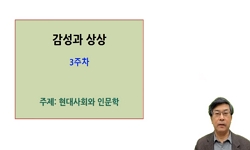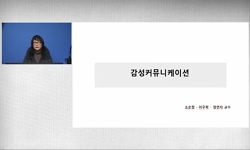이 연구는 흄 철학을 전체적으로 바라보게 해주는 하나의 통합적 관점을 제시하려는 시도의 일환이다. 즉 흄 철학에서 지성(이성)과 정서(감성)의 역할을 대립적으로 또는 한쪽에 치우쳐 이...
http://chineseinput.net/에서 pinyin(병음)방식으로 중국어를 변환할 수 있습니다.
변환된 중국어를 복사하여 사용하시면 됩니다.
- 中文 을 입력하시려면 zhongwen을 입력하시고 space를누르시면됩니다.
- 北京 을 입력하시려면 beijing을 입력하시고 space를 누르시면 됩니다.
흄의 철학에서 지성과 정서:『인성론』1권의 결론 절을 중심으로
한글로보기https://www.riss.kr/link?id=G3734594
- 저자
-
발행기관
-
-
발행연도
2011년
-
작성언어
Korean
- 주제어
-
자료형태
한국연구재단(NRF)
-
0
상세조회 -
0
다운로드
부가정보
국문 초록 (Abstract)
이 연구는 흄 철학을 전체적으로 바라보게 해주는 하나의 통합적 관점을 제시하려는 시도의 일환이다. 즉 흄 철학에서 지성(이성)과 정서(감성)의 역할을 대립적으로 또는 한쪽에 치우쳐 이해하는 기존의 해석을 뛰어넘어, 지성과 정서를 통일적 전체로 놓고 이해하려는 시도이다. 기존의 해석은 흄을 극단적 회의론 아니면 자연주의, 철학적 지성 아니면 일상적 감성, 이성적 회의 아니면 일상적 확신이라고 하는 이분법적이고 양극적인 방식으로 읽었다. 이에 대해 연구자는 흄을 지성과 감성 양자의 조화와 상호 협조에 기초한 '철학하기'를 시도한 철학자로 해석하고자 한다.
이를 위해 연구자는 흄의 주저인『인성론』1권의 결론절에 주목한다. 이 절이 지성과 감성에 대한 흄의 통합적 관점을 분명하게 드러내 보여주기 때문이다. 따라서 이 연구에서 연구자는 이 결론절에 대한 상세한 분석과 해석을 시도할 것이다. 이를 통하여 연구자는 흄에 대하여 다음과 같은 사실을 부각시키고 이로부터 전술한 연구목적에 부합하는 결론들을 얻고자 시도할 것이다.
흄의 ‘결론절’은『인성론』1권("오성에 관하여")에서 다룬 주제와 논의들을 정리하기 위해 마련된 장이며, 실제로 그런 주제와 논의들을 재검토하고 있으며, 그러면서 자신의 최종적 견해를 제시하고 있다. 그런데 이 절을 관점을 달리 하여 읽으면 아주 새롭고 흥미로운 것이 모습을 드러낸다. 1권의 내용을 마무리 짓고 2권과 3권으로 독자들을 이끌기 위한 이러한 결론 절을 느낌이나 정서의 관점에서 읽으면, 그 안에 흄 자신이 느끼는 감정 또는 정서의 파노라마가 펼쳐져 있음을 발견하게 된다. 이러한 정서의 흐름은 크게 세 단계로 구분되며, 각 단계가 특징적인 의미를 지닌다. 흄은 이 결론절에서 자신의 이성적 추론의 진행에 맞추어 여기에 상응하는 정서적 느낌을 상세하게 기술하고 있다. 연구자는 흄의 이러한 서술들을 통하여 그의 정서의 흐름과 변화를 고찰하고, 이를 통하여 지성과 정서의 통합이라는, 흄 철학의 중요한 특징을 드러내 보이고자 한다.
다국어 초록 (Multilingual Abstract)
This study is a preliminary attempt to provide an integrated viewpoint that surveys Hume's philosophy as a whole. That is, this study tries to overcome the existing understanding, which views the roles of intelligence and emotion in Hume's philosophy ...
This study is a preliminary attempt to provide an integrated viewpoint that surveys Hume's philosophy as a whole. That is, this study tries to overcome the existing understanding, which views the roles of intelligence and emotion in Hume's philosophy antagonistically or one-sidedly. The existing understanding tends to look at Hume philosophy in a dichotomous and bipolar manner such as extreme scepticism or naturalism, philosophical intelligence or ordinary emotion, and rational doubt or ordinary conviction. Within this context, the researcher, through this study tries to read Hume as a philosopher who attempted to approach philosophy on the basis of harmony and collaboration between reason and emotion.
In this regard, the researcher focuses on the conclusive section of Hume's Treatise, Vol.1, as the section most clearly demonstrates his unified perspective. Therefore, an attempt of a detailed analysis and interpretation on the section will be made. By doing that, the researcher tries to highlight the following aspect of Hume in order to draw a conclusion that accords to the purpose of this research afore mentioned.
So to speak, the conclusive section is the one that is for review of the subjects and issues dealt in volume I of the Treatise, entitled 'Of the Understanding' and he additionally suggests his own final views on those subjects and issues in the section. A very interesting matter is that if this section is approached in a different perspective, the section reveals an intriguing and novel aspect. That is, if one approaches the 'conclusive section' with the view of feeling or emotion, one will be able to discover a panorama of feelings or emotions Hume has gone through. A variety of emotions Hume has gone through can be divided into three phases and each phase has its particular meaning. Hume, in this section specifies his emotional feeling in accordance with his progress of reasoning. The researcher looks into a stream of emotions (feelings) in Hume's mind, through which a most significant characteristic of Hume philosophy, the integrity of reason and emotion would be illuminated.











